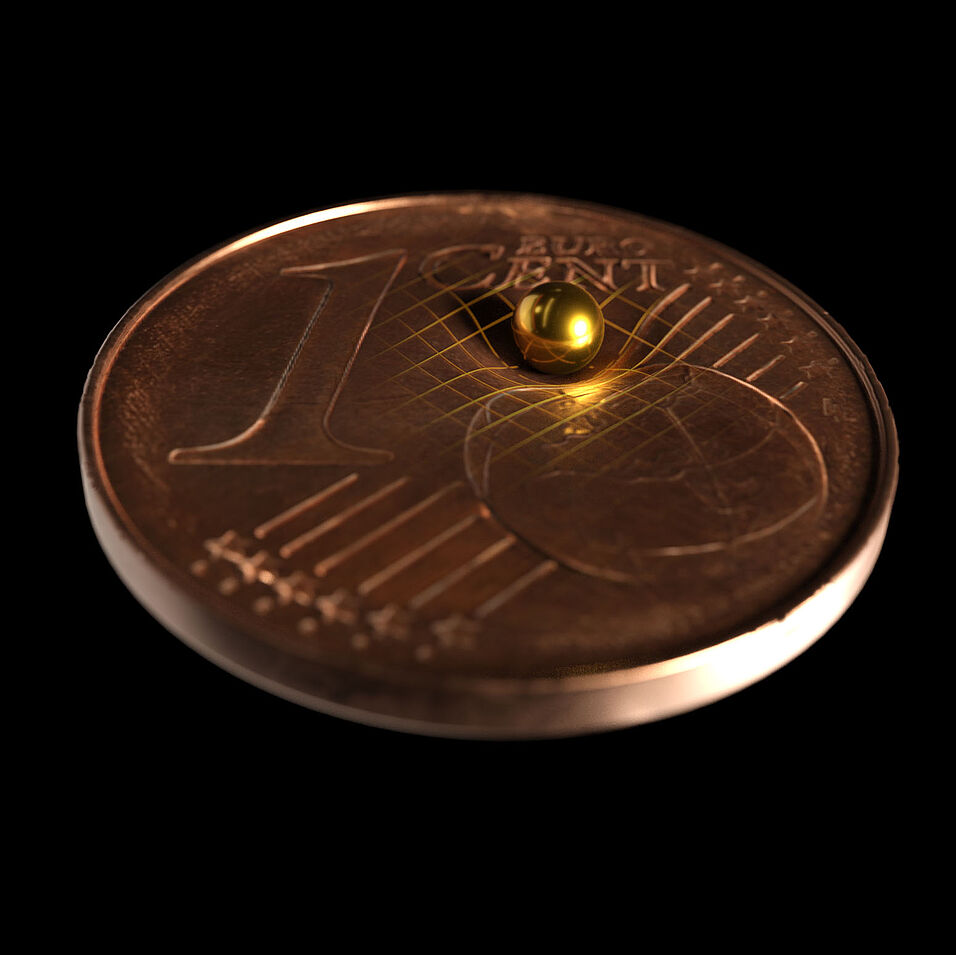By designing and realising a sensitive, milligram torsion balance (f0 = 2.6mHz) we create a mechanical sensor capable of detecting accelerations better than 2x10⁻¹¹m/s² below 100mHz, allowing us to measure the gravitational force of the smallest object to date. The pendulum is suspended from a silica fibre with a diameter of less than 4µm and weighs about 200 mg (2mm gold spheres with 90mg each). To suppress electrostatic forces we utilise a Faraday shield as well as a gaseous discharge method to reduce the amount of surplus charges on the isolated pendulum. The position of a nearby (400µm) gold sphere of similar size is modulated to exert a periodically changing force (12.7mHz), exciting the rotational mode of the torsion balance. An optical lever to read out the pendulum motion, allows the detection of linear and quadratic gravitational coupling. Furthermore we show 1/r dependence of the force and confirm the coupling constant G in a new low mass regime. Improvements on the readout, the passive isolation of the system as well as improved, real-time monitoring of the urban environment will allow us to extend our measurement scheme in the sub-Planck mass regime. This will open up the possibility to explore the gravitational coupling for even smaller masses, probe dark energy theories and test short range forces in a new mass regime.
Publication in Nature:
Measurement of Gravitational Coupling between Millimeter-Sized Masses
Tobias Westphal, Hans Hepach, Jeremias Pfaff, Markus Aspelmeyer
DOI 10.1038/s41586-021-03250-7

